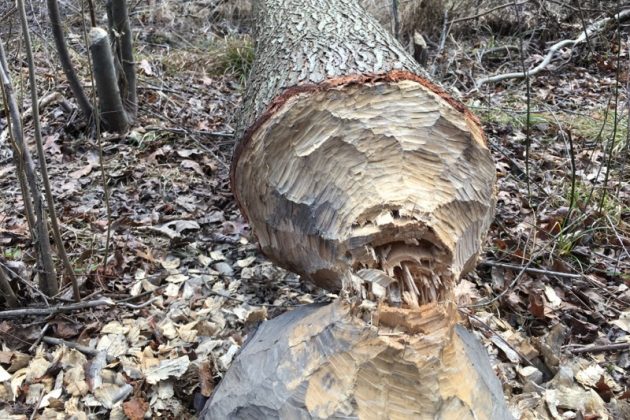It’s the last time you’ll be hearing from me for a while and lord knows that must be a kind of Sunday comfort. Tomorrow is Bob’s grand debut so don’t forget to give him plenty of positive feedback.
 Our new rule is only good news on Sunday, so I have a few fun things to share before I go. Paul and Louise are coming to dinner Tuesday night and maybe Leonard and Lois too, so we have lots to look forward to. But don’t feel left out, you get treats as well. The first is a lovely discussion of ecological engineers from our old friend Mary Willson in Juneau.
Our new rule is only good news on Sunday, so I have a few fun things to share before I go. Paul and Louise are coming to dinner Tuesday night and maybe Leonard and Lois too, so we have lots to look forward to. But don’t feel left out, you get treats as well. The first is a lovely discussion of ecological engineers from our old friend Mary Willson in Juneau.
On the trails: Ecological engineers
We use the word “engineer” in a confusing variety of ways and contexts, but here I mean to refer to organisms that create physical structures or changes in the environment — physical changes that affect other kinds of organisms. The concept is still very broad — one could say (and some researchers do so) that a forest of trees or large kelp, or a tallgrass prairie or an eelgrass bed, produces an environment in which temperature, humidity, air or water currents, precipitation patterns, or soils may be altered, thus affecting many other organisms by providing habitat or access to resources.
However, here I want to consider other “engineers” — those that deliberately, intentionally make or modify physical structures for their own purposes, with collateral consequences for other organisms.
The most well-known ecological engineers in the natural world are beavers. By building dams, they impound water, raising the water table, creating ponds, sometimes preventing floods, but also flooding low-lying areas. Although they may instinctively respond to the sound and feel of running water by trying to build a dam, they make deliberate choices about the size and shape of a dam and its component parts; they also maintain their structures continually. Beaver ponds provide good habitat for fish, especially juveniles, aquatic insects, various birds, and certain plants, although they obviously destroy portions of the adjacent area by flooding it. Some dams are hundreds of yards long and some are many feet high, depending on the terrain. A well-constructed, well-maintained beaver dam can last for many years, and its effects on the landscape may persist long after the beavers have moved on: the pond gradually fills with sediment and dead vegetation and eventually turns into a meadow.
We’re number ONE. Beavers make it happen! Mary goes on to describe other engineers but of course we’re spec-ist around her and we only care about the first one. If you would like to be smart and entertained, go read the others and learn about the wanna be-avers. I’m just going to bask in the recognition that beavers are the job-creators of an entire community.
The second wonderful thing is a photo I came across and having been saving for the right moment to share. It’s titled “Beaver playing the flute” for obvious reasons. All I know about this photo is on the caption below. But isn’t that fun?


The third thing I want to share is the AMAZING donation we received from artist Sara Aycock. She’s a very clever woman in Boise Idaho with a book coming out next fall. I fell in love with her “Victorian Animals” series and she was crazy generous sendng 5 beautifully framed giclee prints that will completely knock your socks off. Each print comes with a framed character description as well. I’m partial of course to Mr. Beaverton. You need to go right now to her etsy store and support this kind of generosity and talent, because something tells me there will be a line waiting to bid on these delightful items at the auction.












 BAR HARBOR — Skip Lisle, president and chief scientist of Beaver Deceivers International, will present his nonviolent, creative approach to beaver management at College of the Atlantic’s Human Ecology Forum in the McCormick Lecture Hall on Tuesday, Feb. 21, at 4:10 p.m. The talk is free and open to the public.
BAR HARBOR — Skip Lisle, president and chief scientist of Beaver Deceivers International, will present his nonviolent, creative approach to beaver management at College of the Atlantic’s Human Ecology Forum in the McCormick Lecture Hall on Tuesday, Feb. 21, at 4:10 p.m. The talk is free and open to the public.




































